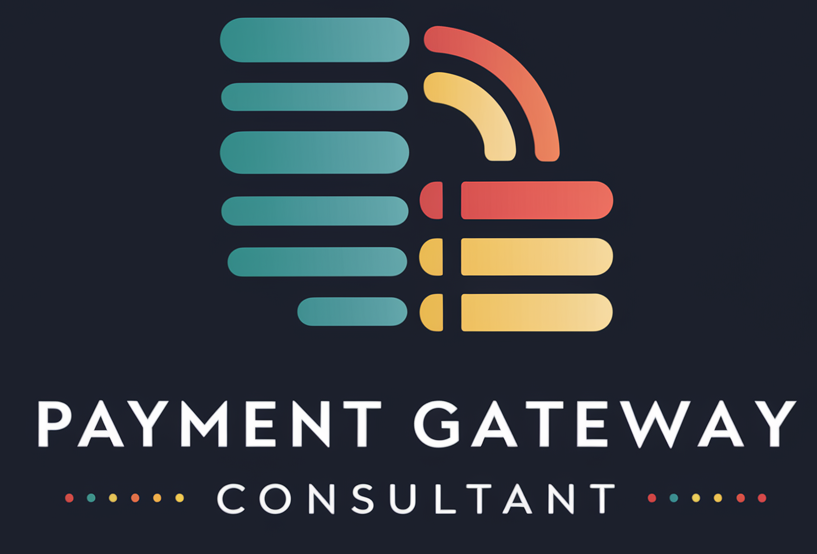Buying a home is a significant milestone, but the upfront costs, especially the down payment, can be a major hurdle for many prospective homeowners. However, there are several ways to achieve the dream of homeownership without a large down payment. This comprehensive guide explores the various options available for how to buy a house with no down payment, including government-backed loans, assistance programs, and specialized mortgages.
Introduction to Buying a House with No Down Payment
Traditionally, buying a home required a significant down payment, often around 20% of the purchase price. This substantial upfront investment can be challenging for many first-time home buyers to save, especially while managing other expenses like rent, student loans, and daily living costs. Fortunately, there are now several zero down mortgage options and programs designed to help homebuyers achieve their goals without a large upfront payment.
These no down payment options have made homeownership more accessible to a wider range of people, particularly those who may struggle to save for a traditional down payment. By understanding the various programs available and their eligibility requirements, prospective homebuyers can find the best path forward for their unique financial situations.
Understanding Zero Down Mortgages
A zero down mortgage is a type of home loan that allows borrowers to finance 100% of the purchase price, eliminating the need for a down payment. These loans are typically backed by government agencies or offered through specialized programs, each with its own set of eligibility criteria and requirements.
While a zero down mortgage can make homeownership more attainable, it’s essential to understand the potential drawbacks. These loans often come with higher interest rates, mortgage insurance premiums, and stricter qualification requirements compared to traditional mortgages with down payments. Borrowers should carefully weigh the pros and cons of a zero down mortgage and ensure they are financially prepared for the long-term commitment of homeownership.
Benefits and Drawbacks of Zero Down Payment
The primary benefit of a zero down payment mortgage is the ability to achieve homeownership without the need for a substantial upfront investment. This can be particularly advantageous for first-time homebuyers who may not have had the time or means to save for a traditional down payment. Additionally, a zero down mortgage allows buyers to allocate their savings towards other expenses, such as closing costs, home improvements, or an emergency fund.
However, there are some potential drawbacks to consider. Zero down mortgages often carry higher interest rates compared to loans with down payments, resulting in higher monthly mortgage payments and more interest paid over the life of the loan. Moreover, without a down payment, borrowers will have limited equity in their homes, which can make it more challenging to refinance or sell the property in the future. It’s crucial for borrowers to carefully assess their financial situation and long-term goals before committing to a zero down mortgage.
Government-Backed Loan Programs
The U.S. government offers several loan programs designed to make homeownership more accessible, including options for how to buy a house with no down payment. These programs are backed by government agencies, such as the Department of Veterans Affairs (VA), the U.S. Department of Agriculture (USDA), and the Federal Housing Administration (FHA). Each program has its own set of eligibility requirements and benefits.
VA Loans: Eligibility and Benefits
The VA loan program is designed to help eligible service members, veterans, and surviving spouses achieve homeownership. One of the most significant benefits of a VA loan is the ability to purchase a home with no down payment. To qualify for a VA loan, borrowers must meet service requirements, have a valid Certificate of Eligibility (COE), and satisfy credit and income criteria.
In addition to the zero down payment option, VA loans offer competitive interest rates, no mortgage insurance requirements, and limited closing costs. These benefits can make homeownership more affordable and accessible for those who have served our country.
USDA Loans: Rural Homeownership with No Down Payment
USDA loans are designed to promote homeownership in designated rural areas. These loans, backed by the U.S. Department of Agriculture, offer 100% financing, meaning eligible borrowers can purchase a home with no down payment. To qualify for a USDA loan, the property must be located in a USDA-eligible rural area, and borrowers must meet income and credit requirements.
USDA loans also offer competitive interest rates and lower mortgage insurance premiums compared to other low down payment options. However, it’s important to note that not all properties will qualify for a USDA loan, and income limits may vary by region.
FHA Loans: Low Down Payment Options
While FHA loans are not technically a zero down payment option, they do offer a low down payment alternative for those who may not qualify for a VA or USDA loan. FHA loans, backed by the Federal Housing Administration, allow borrowers to purchase a home with as little as 3.5% down. These loans have more lenient credit requirements compared to conventional mortgages, making them a popular choice for first-time homebuyers.
However, FHA loans do require both upfront and annual mortgage insurance premiums, which can increase the overall cost of the loan. Borrowers should carefully consider the long-term costs and compare FHA loans with other low down payment options before making a decision.
Home Buyer Assistance Programs
In addition to government-backed loans, there are numerous home buyer assistance programs available at the federal, state, and local levels. These programs are designed to help eligible buyers with down payments, closing costs, and other expenses associated with purchasing a home. By taking advantage of these programs, buyers may be able to achieve homeownership with little to no money down.
Types of Assistance Programs
Home buyer assistance programs come in various forms, including grants, forgivable loans, and deferred payment loans. Grants are funds that do not need to be repaid, while forgivable loans may be forgiven over time if the borrower meets certain criteria, such as maintaining the home as their primary residence for a specified period. Deferred payment loans may not require immediate payments, but will need to be repaid when the home is sold, refinanced, or the mortgage is paid off.
Some common types of assistance programs include down payment assistance, closing cost assistance, and mortgage credit certificates (MCCs). Down payment assistance programs provide funds to help cover the upfront costs of purchasing a home, while closing cost assistance programs help with expenses such as title insurance, appraisals, and legal fees. MCCs are tax credits that can help reduce the amount of federal income tax a borrower owes, freeing up more funds for mortgage payments.
How to Qualify for Assistance Programs
Eligibility for home buyer assistance programs varies depending on the specific program and the organization offering it. Common eligibility criteria include income limits, credit score requirements, and first-time homebuyer status. Some programs may also have occupation-specific requirements, such as those designed for teachers, healthcare workers, or first responders.
To find and apply for assistance programs, buyers can start by contacting their state or local housing finance agency, as well as non-profit organizations focused on affordable housing. These organizations can provide information on available programs and guide buyers through the application process. It’s important to research and apply for these programs early in the homebuying process, as funds may be limited and applications can take time to process.
Conventional Loan Options
While conventional loans typically require a down payment, there are some options available for buyers seeking a low down payment. These programs are offered through private lenders and are not backed by government agencies, but they can still provide a path to homeownership for those with limited funds for a down payment.
Conventional 97 Loan Program
The Conventional 97 loan program, offered through Fannie Mae and Freddie Mac, allows eligible borrowers to purchase a home with just 3% down. This program is designed for first-time homebuyers, but some lenders may offer it to repeat buyers as well. To qualify, borrowers typically need a credit score of at least 620, a debt-to-income ratio below 43%, and must complete a homeownership education course.
While the Conventional 97 program offers a low down payment option, borrowers should be aware that they will be required to pay private mortgage insurance (PMI) until they reach 20% equity in the home. This additional monthly expense should be factored into the overall affordability of the mortgage.
Mortgage Insurance Requirements
Mortgage insurance is typically required on conventional loans with down payments less than 20%. This insurance protects the lender in case of default and allows them to offer lower down payment options. There are two main types of mortgage insurance for conventional loans: private mortgage insurance (PMI) and lender-paid mortgage insurance (LPMI).
PMI is paid by the borrower and can be either a monthly premium added to the mortgage payment or a lump sum paid at closing. Once the borrower reaches 20% equity in the home, they can request to have the PMI removed. LPMI, on the other hand, is paid by the lender and is typically factored into a slightly higher interest rate on the loan. LPMI cannot be removed and will remain in place for the life of the loan.
When considering a low down payment conventional loan, it’s important to compare the costs of PMI and LPMI and factor these expenses into the overall affordability of the mortgage. In some cases, it may be more beneficial to save for a larger down payment to avoid mortgage insurance altogether.
Specialized Loan Programs
In addition to government-backed and conventional loan options, there are several specialized loan programs designed for specific professions or homebuyer situations. These programs may offer low or no down payment options, as well as other benefits tailored to the needs of these buyers.
Good Neighbor Next Door Program
The Good Neighbor Next Door (GNND) program is designed for eligible law enforcement officers, teachers, firefighters, and emergency medical technicians. This program offers a unique opportunity to purchase a home in a revitalization area at a 50% discount off the listed price. In return, buyers must commit to living in the property as their primary residence for at least 36 months.
To be eligible for the GNND program, buyers must meet profession-specific requirements and agree to certain terms, such as the 36-month occupancy requirement. Properties available through this program are limited and are listed for just seven days before being offered to other buyers, so interested individuals must act quickly when a suitable property becomes available.
Doctor Loans for Medical Professionals
Doctor loan programs are designed to help medical professionals, such as physicians, dentists, and veterinarians, purchase a home with little to no down payment. These programs recognize the unique financial challenges faced by medical professionals, such as high student loan debt and the potential for future income growth.
Doctor loans often offer flexible underwriting criteria, such as higher loan limits, lower reserve requirements, and the ability to exclude student loan debt from the debt-to-income ratio calculation. Some programs may allow up to 100% financing, meaning no down payment is required. However, interest rates may be slightly higher compared to conventional loans with a down payment.
To qualify for a doctor loan, borrowers typically need to provide proof of their medical license, employment contract, and income. Lenders may also require a minimum credit score and a clean credit history. It’s important to compare doctor loan programs from multiple lenders to find the best terms and rates for your specific situation.
Alternative Strategies for Down Payments
In addition to the loan programs and assistance options discussed above, there are several alternative strategies that buyers can use to reduce or eliminate the need for a down payment. These strategies involve leveraging other resources or negotiating with lenders and sellers to minimize upfront costs.
Using Lender Credits
Lender credits are a way for borrowers to reduce their out-of-pocket expenses by agreeing to a higher interest rate on their mortgage. In exchange for paying a higher rate, the lender agrees to cover a portion of the borrower’s closing costs, which can include the down payment. This strategy can be useful for buyers who have limited funds for upfront costs but can afford a slightly higher monthly payment.
When considering lender credits, it’s important to compare the long-term costs of the higher interest rate with the upfront savings. In some cases, it may be more beneficial to pay the closing costs out of pocket and secure a lower interest rate. A mortgage professional can help you assess your options and determine the best strategy for your financial situation.
Negotiating Seller Concessions
Seller concessions are another way to reduce the upfront costs of buying a home. In this arrangement, the seller agrees to pay a portion of the buyer’s closing costs, which can include the down payment. Seller concessions are typically negotiated as part of the purchase agreement and can be a valuable tool for buyers with limited funds.
The availability and amount of seller concessions can vary depending on market conditions and the seller’s motivation. In a buyer’s market, sellers may be more willing to offer concessions to attract buyers and close the deal. However, in a seller’s market, buyers may have less negotiating power, and sellers may be less likely to offer concessions.
When negotiating seller concessions, it’s important to work with an experienced real estate agent who can help you structure the offer and navigate the negotiation process. Keep in mind that seller concessions may be capped by the lender and cannot exceed a certain percentage of the purchase price.
Receiving a Down Payment Gift
A down payment gift is a financial contribution from a family member, friend, or other eligible donor that can be used towards the down payment on a home. Many loan programs, including conventional and FHA loans, allow buyers to use gifted funds for a portion or all of their down payment.
To use a down payment gift, buyers must provide documentation showing the donor’s relationship to the buyer, the amount of the gift, and a statement confirming that the funds are a gift and not a loan. The gift must also be properly sourced and deposited into the buyer’s account prior to closing.
It’s important to note that some loan programs may have restrictions on who can provide a down payment gift and how much of the down payment can come from gifted funds. Buyers should consult with their lender to understand the specific requirements and documentation needed to use a down payment gift.
Preparing for the Home Buying Process
Regardless of the down payment strategy you choose, there are several steps you can take to prepare for the home buying process and improve your chances of success. These steps include improving your credit score, managing your debt-to-income ratio, and educating yourself about the homebuying process.
Improving Your Credit Score
Your credit score is a critical factor in determining your eligibility for a mortgage and the interest rate you’ll receive. A higher credit score can help you qualify for better loan terms and lower interest rates, which can save you thousands of dollars over the life of the loan.
To improve your credit score, start by reviewing your credit report for errors and disputing any inaccuracies. Make sure to pay all of your bills on time, reduce your credit card balances, and avoid opening new credit accounts unless absolutely necessary. Consistently demonstrating responsible credit behavior over time can help boost your score and make you a more attractive candidate for a mortgage.
Managing Your Debt-to-Income Ratio
Your debt-to-income (DTI) ratio is another important factor that lenders consider when evaluating your mortgage application. This ratio compares your monthly debt payments to your gross monthly income and helps lenders assess your ability to manage the additional debt of a mortgage.
To improve your DTI ratio, focus on paying down existing debt, such as credit card balances, car loans, and student loans. Avoid taking on new debt, and consider increasing your income through a side job or freelance work. A lower DTI ratio can help you qualify for a mortgage and may even help you secure a better interest rate.
Taking a Homeownership Education Course
Many loan programs, particularly those designed for first-time homebuyers, require or encourage buyers to complete a homeownership education course. These courses cover topics such as budgeting, credit management, and the responsibilities of homeownership, and can help buyers make informed decisions throughout the purchasing process.
Homeownership education courses are typically offered by non-profit organizations, housing counseling agencies, and some lenders. They may be available online, in-person, or a combination of both. Completing a homeownership education course can not only fulfill program requirements but also provide valuable knowledge and resources to help you navigate the complexities of buying and owning a home.
Conclusion: Achieving Homeownership with No Down Payment
Buying a home with no down payment is possible through a variety of programs and strategies, including government-backed loans, assistance programs, and specialized mortgages. By understanding the options available and preparing yourself financially, you can achieve the dream of homeownership without the burden of a large upfront investment.
However, it’s important to carefully consider the long-term costs and responsibilities of homeownership before pursuing a zero down mortgage. Make sure to review your budget, assess your financial goals, and consult with a trusted mortgage professional to determine the best path forward for your unique situation.
With the right preparation, guidance, and resources, buying a house with no down payment can be a viable and rewarding option for many aspiring homeowners. By taking advantage of the programs and strategies outlined in this guide, you can turn your homeownership dreams into a reality and begin building long-term financial security through real estate.
[/ST]
See also:






